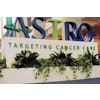Accelerated partial-breast irradiation (APBI) is effective in treating many women with low-risk breast cancer, but eligibility criteria for this treatment have been controversial and are still being defined. One of the concerns -- that APBI may not be appropriate for younger women because, historically, they have higher risk of local failure with conventional radiation therapy -- may be offset by a new study comparing local control, toxicity, and cosmesis outcomes of women older and younger than 50.
The study reports the outcomes of 1,440 women enrolled in the first clinical trial evaluating use of a balloon brachytherapy catheter (MammoSite, Hologic, Bedford, MA). It represents an analysis of the largest cohort of prospectively studied women younger than age 50 treated with APBI, and has been published online in the Annals of Surgical Oncology (March 25, 2009).
Patients in the study had breast-conservation surgery and APBI treatment in lieu of adjuvant whole-breast radiation therapy between May 2002 and July 2004. Ninety-seven hospitals and private practices participated in the study, which was conducted as a registry trial of the American Society of Breast Surgeons (ASBS) in Columbia, MD.
A total of 1,449 primary early-stage breast cancers were treated, of which 130 (9%) were in women less than 50 years of age. The women in this younger group ranged in age from 31 to 49, with a median age of 47.5 years. The majority (83%) of the cancers of these younger patients were diagnosed as invasive breast cancer; 13% were ductal carcinoma in situ (DCIS). Tumor size was less than 10 mm for 32% and between 10 and 20 mm for 52%. Eight-five percent had an N0 nodal status, and 88% had negative margins.
The other group of patients ranged in age from 50 to 93.5, with a median age of 67.5 years. Invasive breast cancers represented 86.9% of the cancers; 13.1% were diagnosed as DCIS. Tumor size was less than 10 mm for 43% and between 10 and 20 mm for 44%. Eighty-three percent had a N0 nodal status, and 92% had negative margins.
Women younger than 50 were more likely to develop fat necrosis, according to lead author Dr. Atif Khan, a radiation oncologist at Robert Wood Johnson University Hospital/Cancer Institute of New Jersey in New Brunswick. Six women younger than 50, or 4.6%, developed this toxicity, compared with 24, or 1.8%, of the women older than 50. These findings were coded as fat necrosis, breast deformity, fibrosis, subcutaneous tissue change, cyst, and palpable mass.
Seroma, an accumulation of fluid, was the most common toxicity experienced, with 27.6% of the older women and 23.1% of the younger women having this condition. The second most common toxicity was telangiectasia, or the appearance of elevated dark red blotches on the skin caused by capillary dilation, with younger women having slightly greater but statistically insignificant occurrences at 13.8% versus 9.3%. Infection (9.2% younger/9.6% older) and retraction (8.5% younger/6.1% older) were also reported.
Cosmesis was also excellent for both groups, based on available records for the majority of the patient cohort. After 24 months, 93.9% of a group of 751 older women and 86.5% of a group of 74 younger women had excellent results (comparable to contralateral breast) or good results (minimal but identifiable radiation effects). This equalized at 36 months, with 93% of this same group of older women and 90% of the younger women having good or excellent results.
Ten of the 74 younger women, or 13.5%, had fair or poor cosmesis at 24 months. This was defined as readily observable radiation effects (fair) and severe sequelae of breast tissue (poor). These results improved by 3.8% at 36 months.
By comparison, 42 of the 751 older women, or 5.6%, had fair or poor cosmesis at 24 months, and this percentage increased to 6.4% at 36 months.
Three years after treatment, recurrence of ipsilateral breast tumors was low and not statistically significant between the two groups (3.1% younger versus 1.6% older). Four of the 130 patients younger than 50 had local recurrence, and three of these four had been diagnosed with invasive breast cancer. Twenty-one of the older patients, all of whom had invasive breast cancer, developed ipsilateral breast tumors.
Four of the patients, all of whom were older than 50, had isolated regional recurrences. One woman in each group had a simultaneous local and regional recurrence. Distant recurrences occurred in two (1.5%) women younger than 50 and in 14 (1.1%) women in the older group.
The authors warned that a difference in local control may become evident between the two age groups with longer follow-up. They feel, however, that with the exception of the proclivity for younger women to develop fat necrosis toxicity as compared to older women, the results are comparable for women between the ages of 30 and 94.
A phase III trial (B39/RTOG0413) to definitively establish the equivalency of APBI with whole-breast radiation therapy was initiated in March 2005 and is still open for enrollment. It is cosponsored by the National Surgical Adjuvant Breast and Bowel Project (NSABP) of Pittsburgh and the Radiation Therapy Oncology Group (RTOG) of Philadelphia.
By Cynthia E. Keen
AuntMinnie.com staff writer
April 20, 2009
Related Reading
Study: APBI compares favorably to standard RT, October 1, 2008
Cosmetic results good, toxicity mild with accelerated partial-breast irradiation, March 20, 2006
APBI variable affect late tissue toxicity, cosmetic outcome, February 13, 2006
Copyright © 2009 AuntMinnie.com



















